

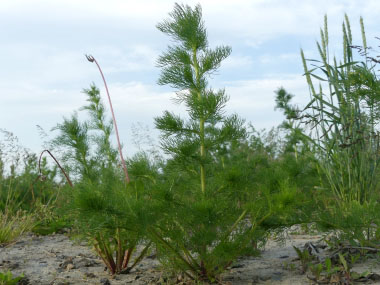

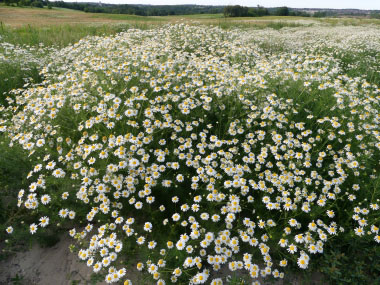
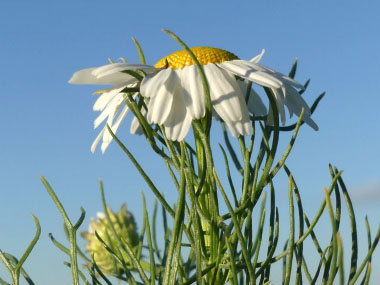
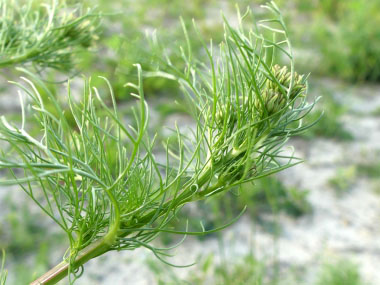
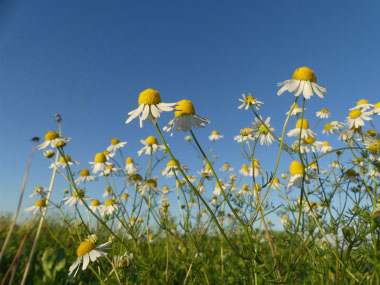
To support our efforts please browse our store (books with health benefits, etc.).
Stinking chamomile, also known as mayweed, mayweed chamomile, or dog fennel, is an annual bushy broadleaf plant that germinates in early spring. This annual plant is in the Asteraceae family and is native to Europe. Stinking chamomile is closely related to chamomile, but is far less effective medicinally. In fact, it is rarely used in contemporary herbal practises. Stinking chamomile is a prolific seed producer, producing more than 960,000 seeds per plant. The seeds are viability in the soil from 4 to 6 years.
Distinguishing Features
This plant generally is very easy to spot as it tends to grow quite bushy and is adorned with countless daisy-like flowers. On smaller plants, the leaves resemble those on the pineapple weed. This plant is most similar in appearance to the scentless chamomile (Tripleurospermum inodorum).
Flowers
Like other plants in the Asteraceae family, flower heads are actually clusters of disk and ray flowers. On the stinking chamomile, the white petal-like structures are actually the corollas of white ray flowers. Yellow disk flowers form the centre of the flower head and are numerous. The daisy-like flower heads occur at the terminal of stems, and many flowers grow on one plant. Flowers bloom anytime between April to August depending on location.
 Fields
of Nutrition has medicinal benefits and vitamin/mineral content of Stinking Chamomile.
Fields
of Nutrition has medicinal benefits and vitamin/mineral content of Stinking Chamomile.
Leaves
The alternate, slightly hairy, leaves are deeply divided and pointy. The leaves can grow from 2 to 6.5 cm (3/4 to 2 1/2”) in length, and when crushed, will emit a foul odour. It's leaves are somewhat similar to pineapple weed.
Height
Stinking chamomile grows anywhere from 15 to almost 1 metre tall (6” to 3').
Habitat
This plant prefers disturbed soils, farmland, and unmanaged areas, but it also grows near roadsides, coastal dunes, and in landscaped areas.
Edible Parts
This wild plant is not a commonly sought-after edible for foragers and for good reason. Caution is advised with this plant. Very small quantities of the leaves can be used as a flavouring herb and the flowers can be used to make a tea but they are much weaker than chamomile for its calming effects. Stinking chamomile does not smell that good hence the reason this is not a popular plant for wild food enthusiasts.
Other Name
Mayweed.
Similar Plants
Winter Survival Food Handbook

PDF Plant Magazines
Types of Wild Food
Geographic Zones Seasons
Disclaimer
EdibleWildFood.com is informational in nature. While we strive to be 100% accurate, it is solely up to the reader to ensure proper plant identification. Some wild plants are poisonous or can have serious adverse health effects.
We are not health professionals, medical doctors, nor are we nutritionists. It is up to the reader to verify nutritional information and health benefits with qualified professionals for all edible plants listed in this web site. Please click here for more information.
Why Edible Wild Food?
- Food costs are rising
- Free, wild food is readily abundant
- Wild food adds nutrition to your diet
- Wild food can help treat various medical conditions





